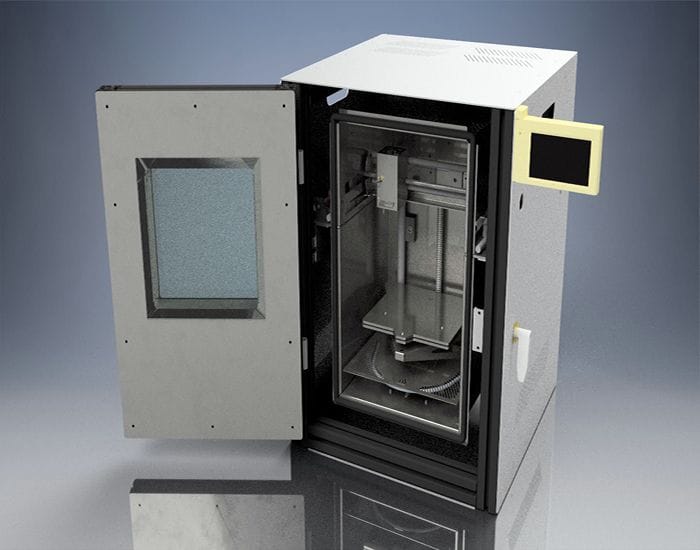![A build-your-own high-temperature 3D printer? [Source: igus GmbH]](https://fabbaloo.com/wp-content/uploads/2020/05/image-asset_img_5eb0992e1c7a4.jpg)
A blog post from igus GmbH describes plans for building your own high-temperature 3D printer.
High-temperature devices are in great demand these days, and there’s a simple reason for it: a high-temperature 3D printer is able to work with high-temperature materials. This would include thermoplastics such as ULTEM, PEEK or PAEK.
These materials are desirable because they offer great strength, chemical resistance and have light weight, and thus are often used in advanced designs.
That interest in high-temperature materials over the past few years has created a small industry of various manufacturers producing specialized hig- temperature 3D printing machines. I believe it to be quite a profitable segment, as they carry price tags higher than you’d see on normal temperature 3D printers. Sometimes they run for even six times as much as you’d pay for a regular 3D printer.
One reason for the big price difference is the fact that there are plenty of open source designs available for low-temperature 3D printers. These designs allow not only individuals to inexpensively build a device, but also allow manufacturers to produce inexpensive devices as well.
Until now there really hasn’t been many high-temperature 3D printer designs available to the public. Now there is one from igus GmbH.
Who is igus? They are a German company that’s been in existence for over 50 years. They specialize in producing various types of bearings, linear guides, flexible cables, cable carriers, and similar components.
![Exploded view of the make-it-yourself high-temperature 3D printer [Source: igus GmbH]](https://fabbaloo.com/wp-content/uploads/2020/05/image-asset_img_5eb0992e484f7.jpg)
These are just the things one might need to use if you happen to be building your own 3D printer. I think you might now see the connection here.
They explain:
“Low-cost design in the own factory: Based on this idea, the igus team of additive manufacturing has developed and built a high temperature 3D printer with in-house mechanical engineering components.”
And:
“The complete linear systems, consisting of drylin W linear guides, dryspin steep threads and igus stepper motors were used from the standard range. With the help of the 3D high temperature printer, the development of new printing materials was supported, so that users can now use the high-performance plastics iglidur J350 and RW370 to make lubricant- and maintenance-free filaments for the production of heat-resistant components.”
Yes, the design does include a number of igus components, but really, this is a high-temperature 3D printer! One that you could conceivably build on your own.
igus is providing the design documents for public download at no charge, however you’ll have to register with them to do so.
There is a disclaimer:
“The models and drawings provided here are an example of the use of various igus components in a high temperature 3D printer or in a high-temperature application. A legally binding assurance of certain properties or the suitability for a certain application cannot be derived. igus assumes no liability for damages resulting from the application of the models, drawings and products. Accordingly, no support is offered for the construction of this 3D printer, as igus is not a manufacturer of 3D printers.”
Nevertheless, it will be very interesting to see if anyone takes up their challenge to build their own high-temperature 3D printer and begin printing materials such as PEEK.
If this design becomes popular, I’m wondering what effect it will have on the high-temperature machines’ high pricing.
Via igus











FELIXprinters has released a new bioprinter, the FELIX BIOprinter, which is quite a change for the long-time 3D printer manufacturer.